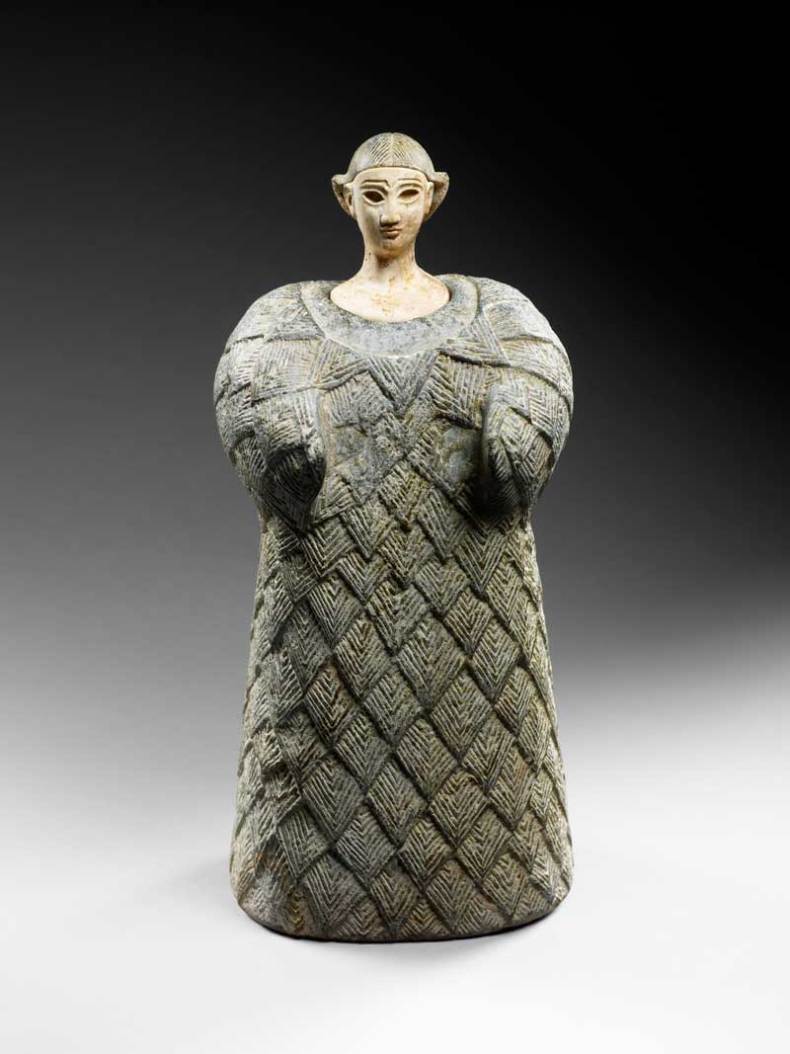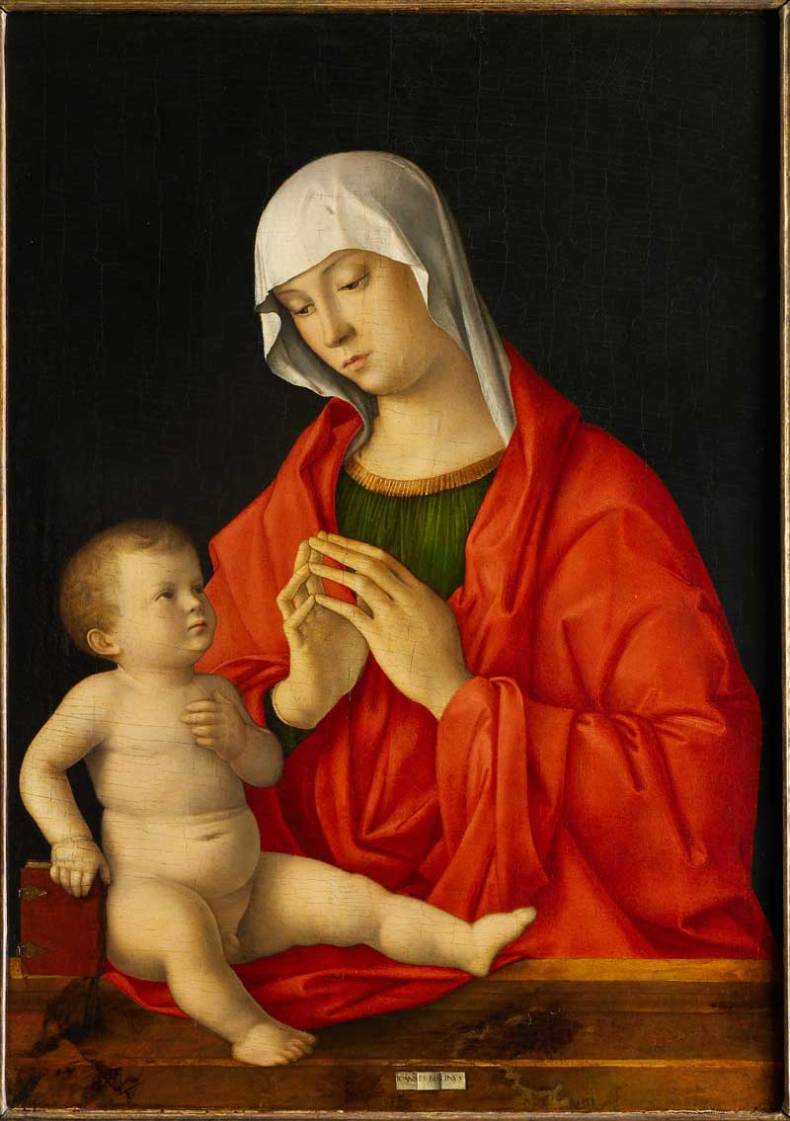The Louvre’s new exhibition, ‘Birth of a Museum’, remained quiet this week compared with the rest of the ever-bustling national museum with its throngs of tourists. This is not surprising. Much of the French press and wider critical community have been disdainful of the Louvre Abu Dhabi, or ‘Louvre des Sables’ (Louvre of the Sand) since its conception.
The deal was struck between Abu Dhabi and France-Muséums – an agency made up of several national French museums specially created to work on the project – in 2007. France-Muséums will lend pieces from French national collections, put on temporary exhibitions and advise on acquisitions. ‘Birth of a Museum’ is made up of works acquired for the Louvre Abu Dhabi since 2009 and acts as a preview of Saadiyat Island’s own Louvre due to open in December 2015.
It is a strange pick-and-mix of a show, with a wildly disparate collection of antiquities, objects and paintings. Justifying the unusual juxtapositions is an oft-repeated slogan about the museum’s aim to be ‘universal’ and to foster ‘a dialogue between cultures and civilisations’. But the overall impression is an ensemble of museum-quality pieces which bear very little relation to each other.

Bactrian ‘princess’ (detail; late third millenium BC–early second millenium BC), Central Asia © Louvre Abu Dhabi / Thierry Ollivier
A Bactrian ‘princess’ from c. 2000 BC is beautifully preserved but, despite whizzy accompanying graphics, it’s difficult to establish her historical context when she is placed among unrelated objects. Some heavyweights of Western art are represented, such as La Hyre, Bellini, Manet – but they sit alone. Didier Rykner of the Tribune de l’Art (critical of the Louvre Abu Dhabi project since the beginning) points out that fragments of a Manet painting, the Gitanos, would make more sense somewhere like the Musée d’Orsay or the Met where there is already an established collection of Manet’s work.
The birth of a museum and the problems it entails – how and what you should cherry pick to establish a ‘universal’ collection – is an interesting concept. And France’s cultural elite are short-sighted in relation to their own museum history – the Louvre collections were bought by kings to show off wealth and power, or pillaged from occupied or less developed countries in the 19th century. At least the Emiratis are paying a fair price for the art and the expertise.

Madonna and Child (c. 1480–85), Giovanni Bellini © Louvre Abu Dhabi / Thierry Ollivier
But there are more pressing concerns surrounding the Louvre Abu Dhabi.
February saw a protest at the Guggenheim New York over labour conditions at the museum’s construction site in Abu Dhabi. Writing in the New York Times, Andrew Ross outlines the punishing working conditions and unjust employment practices faced by migrant workers on Saadiyat Island.
Closer to home, the French are worried about the Louvre selling out. For some critics the Louvre selling its name and expertise is akin to selling its soul. There are also concerns that the France-Muséums Agency is depriving French museums of great acquisitions by packing them off to the Emirates. Aside from national pride, this has more far-reaching political implications in France, where the national museums are run by fonctionnaires – civil servants employed directly by the Ministry of Culture.
Laurence des Cars, directrice scientifique of France-Muséums agency and curator of the exhibition has a more global outlook, remembering the sceptical attitude in Europe towards rich American collectors buying up European painting at the end of the 19th century. ‘These transfer phenomena have always existed’ she says ‘they are testament to new international players at an economic, political and cultural level’.
‘Birth of a Museum’ is at the Louvre, Paris, until 28 July.
Related Articles
Protest at the Guggenheim over Saadiyat Island labour conditions (Imelda Barnard)

Problem child? The Louvre Abu Dhabi is previewed in Paris
Bactrian 'princess' (detail; late third millenium BC–early second millenium BC), Central Asia © Louvre Abu Dhabi / Thierry Ollivier
Share
The Louvre’s new exhibition, ‘Birth of a Museum’, remained quiet this week compared with the rest of the ever-bustling national museum with its throngs of tourists. This is not surprising. Much of the French press and wider critical community have been disdainful of the Louvre Abu Dhabi, or ‘Louvre des Sables’ (Louvre of the Sand) since its conception.
The deal was struck between Abu Dhabi and France-Muséums – an agency made up of several national French museums specially created to work on the project – in 2007. France-Muséums will lend pieces from French national collections, put on temporary exhibitions and advise on acquisitions. ‘Birth of a Museum’ is made up of works acquired for the Louvre Abu Dhabi since 2009 and acts as a preview of Saadiyat Island’s own Louvre due to open in December 2015.
It is a strange pick-and-mix of a show, with a wildly disparate collection of antiquities, objects and paintings. Justifying the unusual juxtapositions is an oft-repeated slogan about the museum’s aim to be ‘universal’ and to foster ‘a dialogue between cultures and civilisations’. But the overall impression is an ensemble of museum-quality pieces which bear very little relation to each other.
Bactrian ‘princess’ (detail; late third millenium BC–early second millenium BC), Central Asia © Louvre Abu Dhabi / Thierry Ollivier
A Bactrian ‘princess’ from c. 2000 BC is beautifully preserved but, despite whizzy accompanying graphics, it’s difficult to establish her historical context when she is placed among unrelated objects. Some heavyweights of Western art are represented, such as La Hyre, Bellini, Manet – but they sit alone. Didier Rykner of the Tribune de l’Art (critical of the Louvre Abu Dhabi project since the beginning) points out that fragments of a Manet painting, the Gitanos, would make more sense somewhere like the Musée d’Orsay or the Met where there is already an established collection of Manet’s work.
The birth of a museum and the problems it entails – how and what you should cherry pick to establish a ‘universal’ collection – is an interesting concept. And France’s cultural elite are short-sighted in relation to their own museum history – the Louvre collections were bought by kings to show off wealth and power, or pillaged from occupied or less developed countries in the 19th century. At least the Emiratis are paying a fair price for the art and the expertise.
Madonna and Child (c. 1480–85), Giovanni Bellini © Louvre Abu Dhabi / Thierry Ollivier
But there are more pressing concerns surrounding the Louvre Abu Dhabi.
February saw a protest at the Guggenheim New York over labour conditions at the museum’s construction site in Abu Dhabi. Writing in the New York Times, Andrew Ross outlines the punishing working conditions and unjust employment practices faced by migrant workers on Saadiyat Island.
Closer to home, the French are worried about the Louvre selling out. For some critics the Louvre selling its name and expertise is akin to selling its soul. There are also concerns that the France-Muséums Agency is depriving French museums of great acquisitions by packing them off to the Emirates. Aside from national pride, this has more far-reaching political implications in France, where the national museums are run by fonctionnaires – civil servants employed directly by the Ministry of Culture.
Laurence des Cars, directrice scientifique of France-Muséums agency and curator of the exhibition has a more global outlook, remembering the sceptical attitude in Europe towards rich American collectors buying up European painting at the end of the 19th century. ‘These transfer phenomena have always existed’ she says ‘they are testament to new international players at an economic, political and cultural level’.
‘Birth of a Museum’ is at the Louvre, Paris, until 28 July.
Related Articles
Protest at the Guggenheim over Saadiyat Island labour conditions (Imelda Barnard)
Unlimited access from just $16 every 3 months
Subscribe to get unlimited and exclusive access to the top art stories, interviews and exhibition reviews.
Share
Recommended for you
Review: Made in Italy, ‘The Glamour of Italian Fashion’ at the V&A
What’s behind the rise and rise of Italian fashion?
Review: Liam Gillick and Viv Albertine star in Joanna Hogg’s ‘Exhibition’
Hogg delivers another candid portrayal of contemporary upper-middle class life
Climbing Frames at the Tate
Twitter is up in arms about the parents who allowed their child to climb on a Donald Judd artwork at the Tate Modern. Where were the guards?